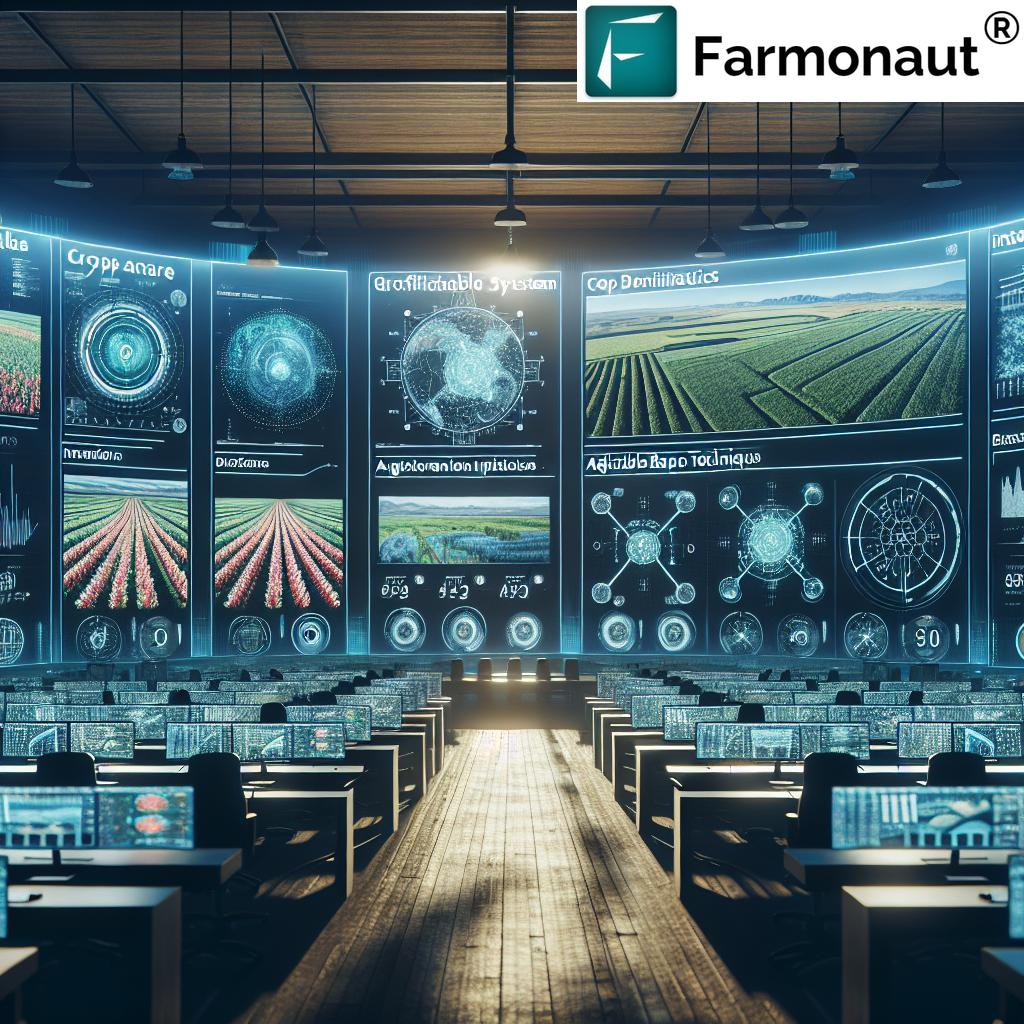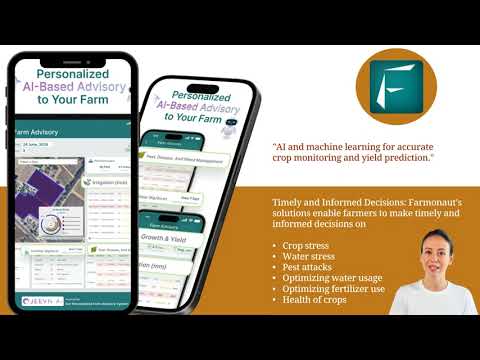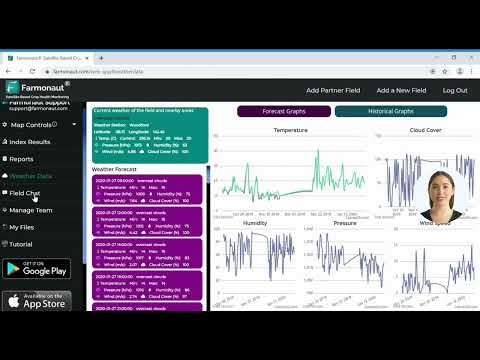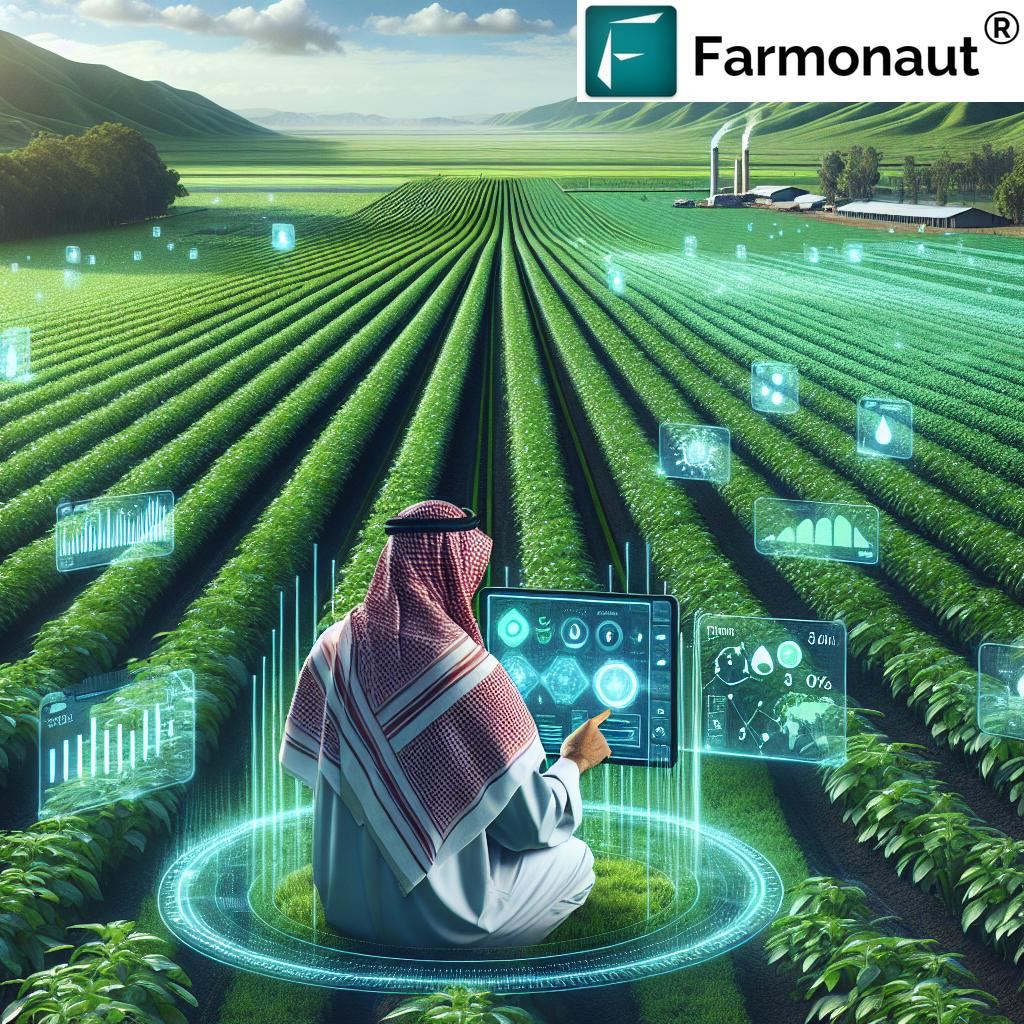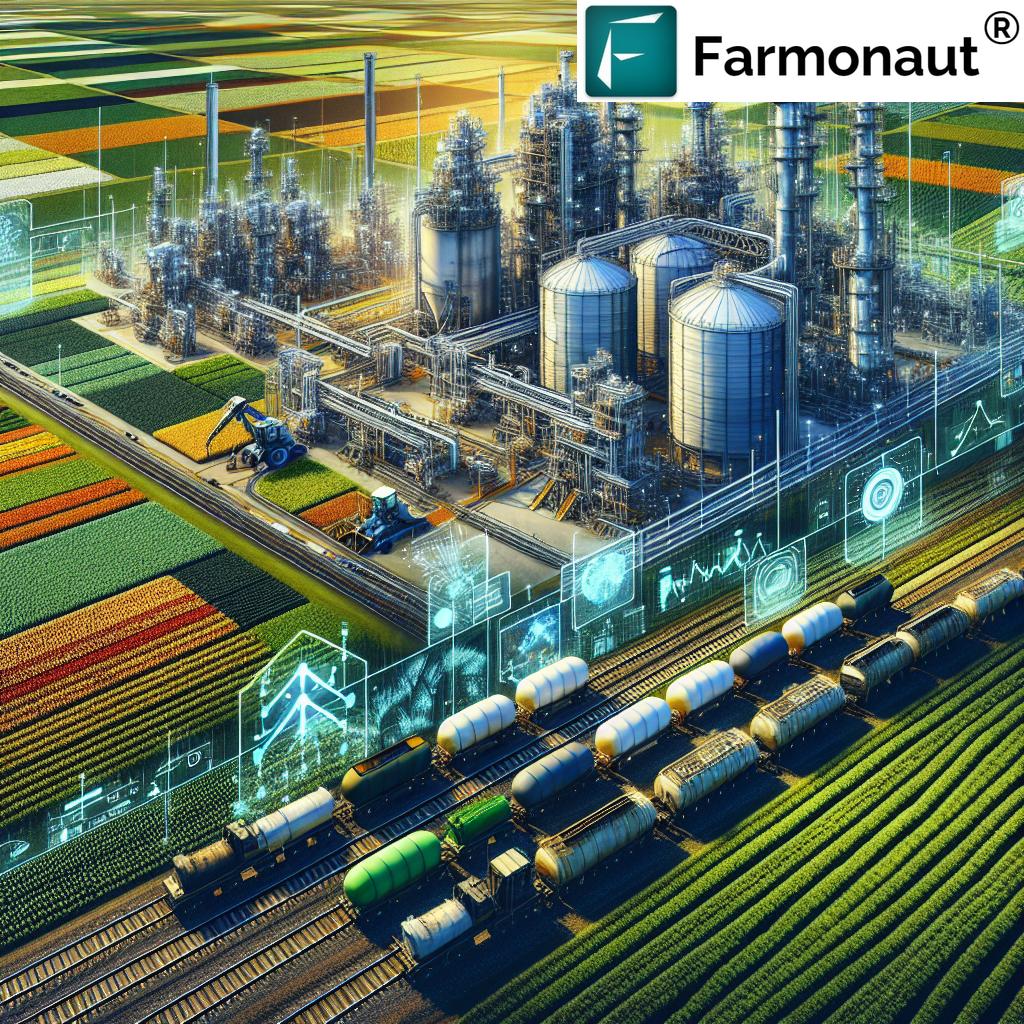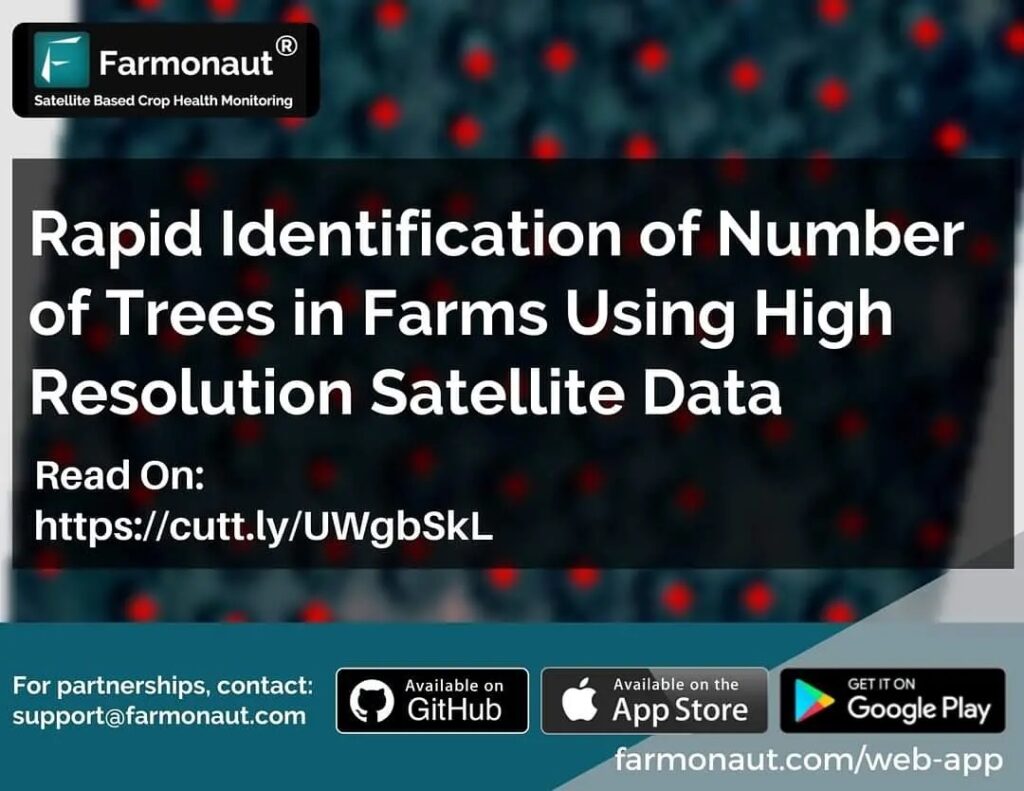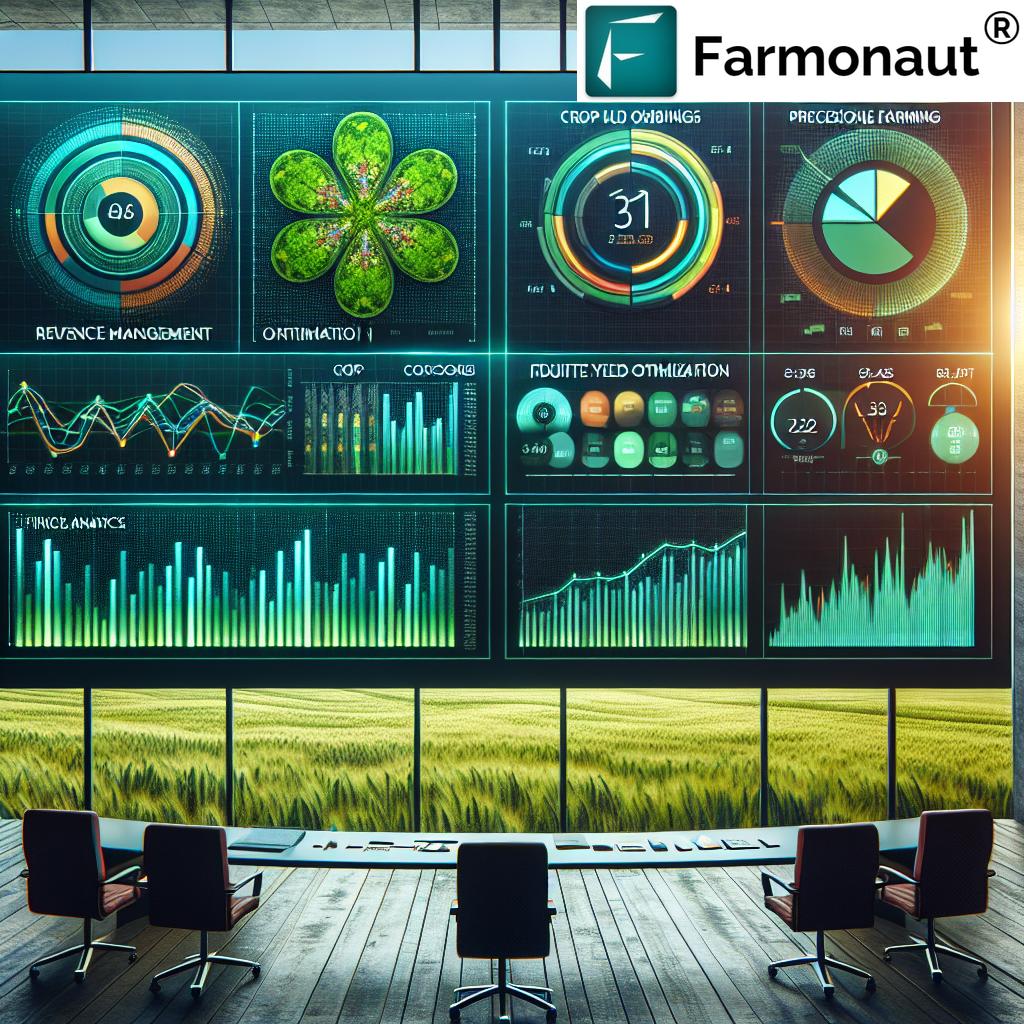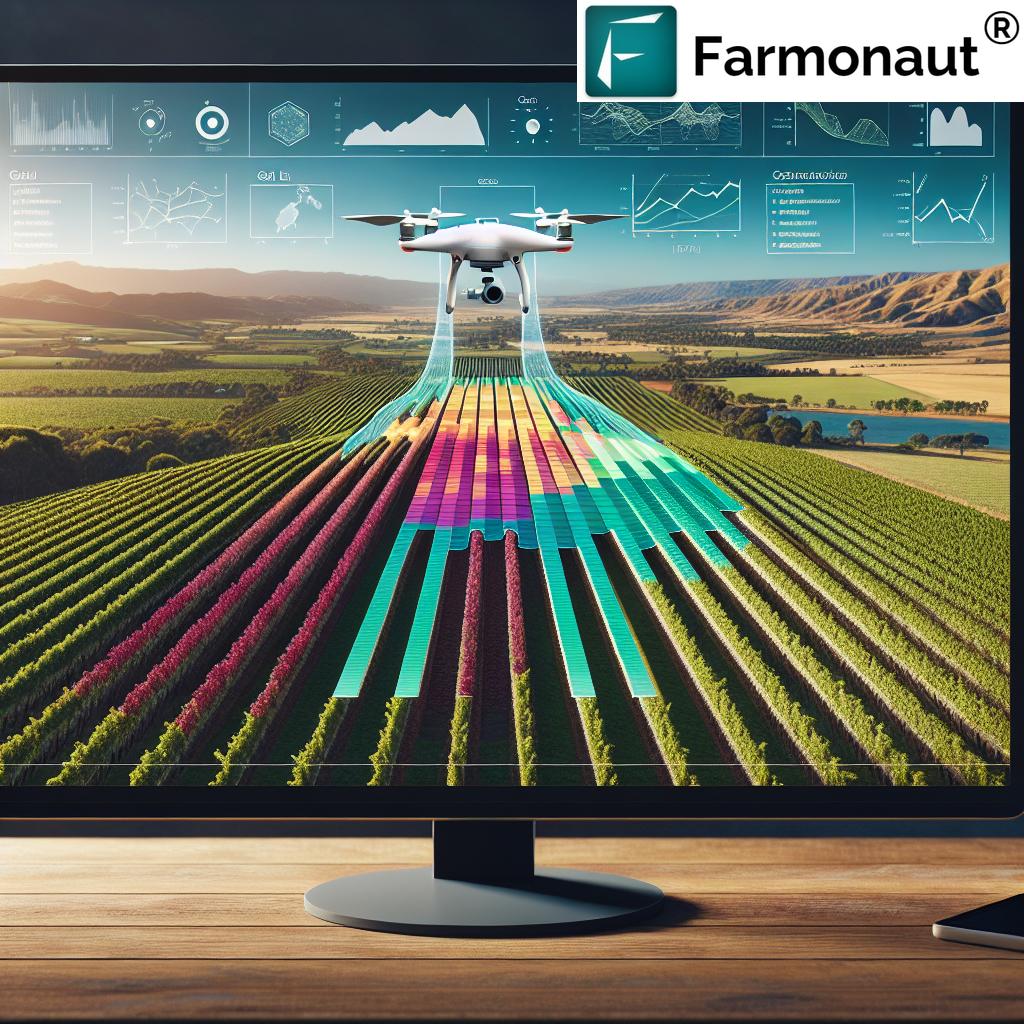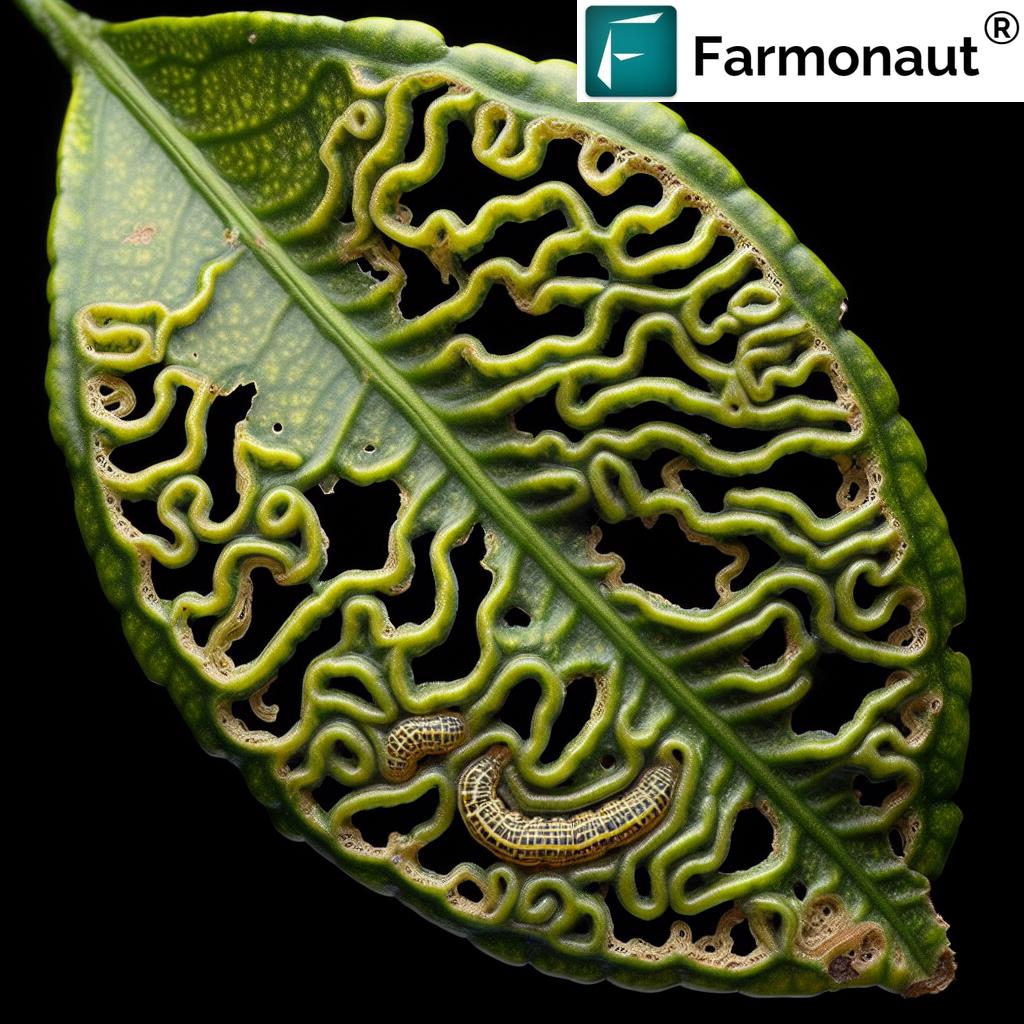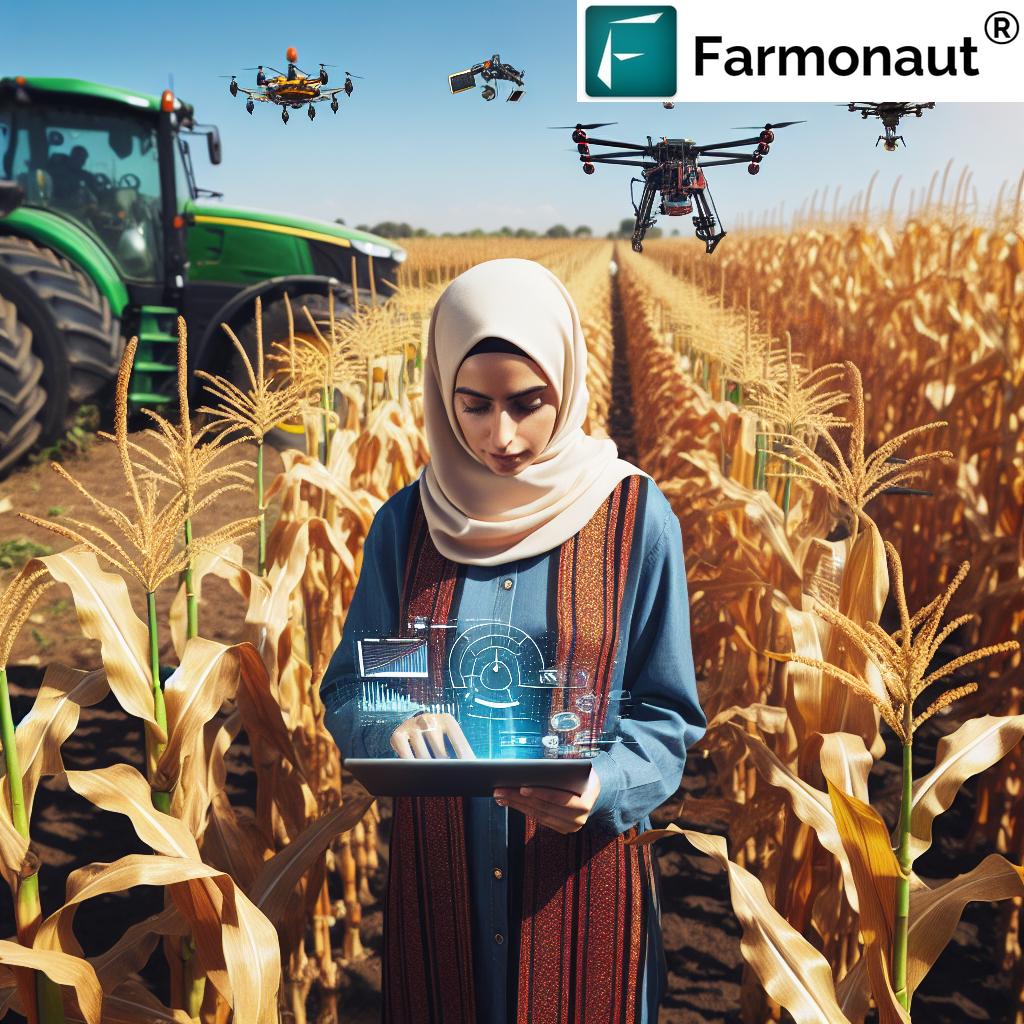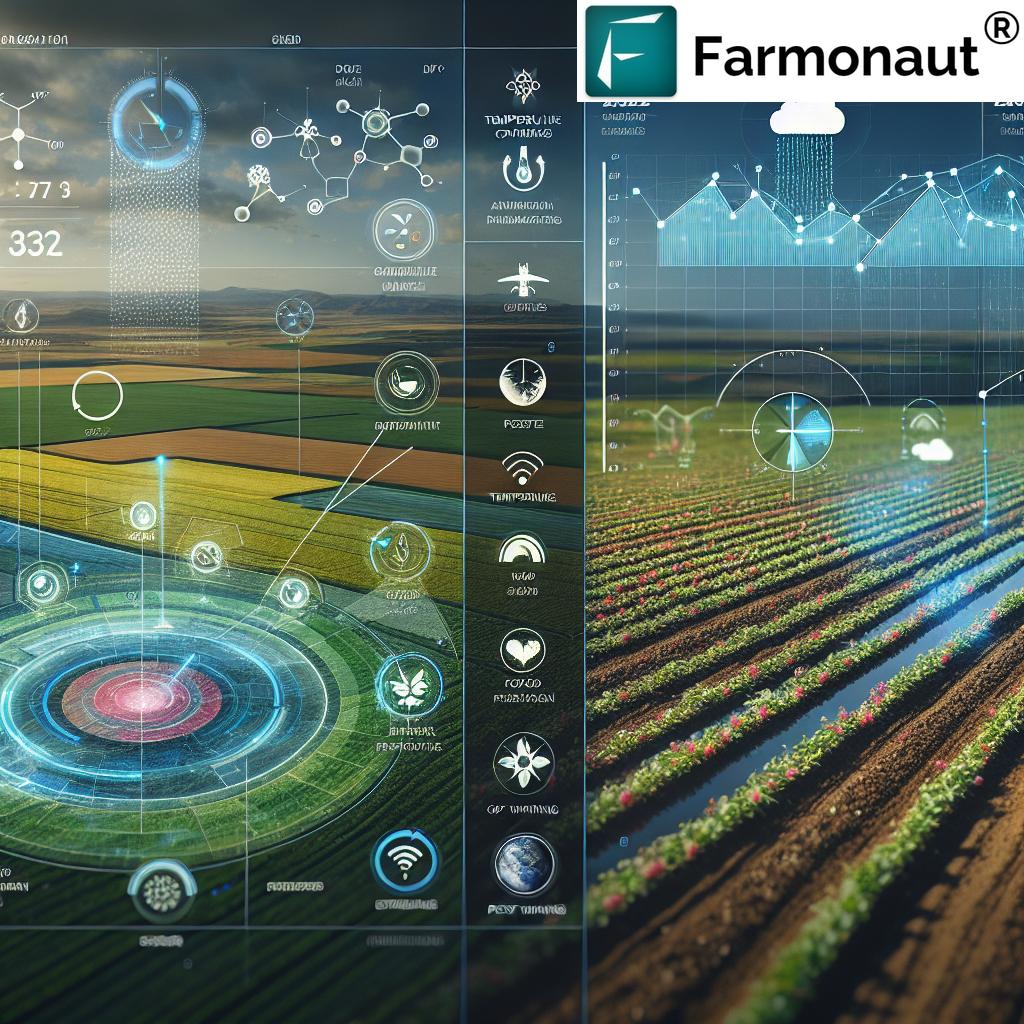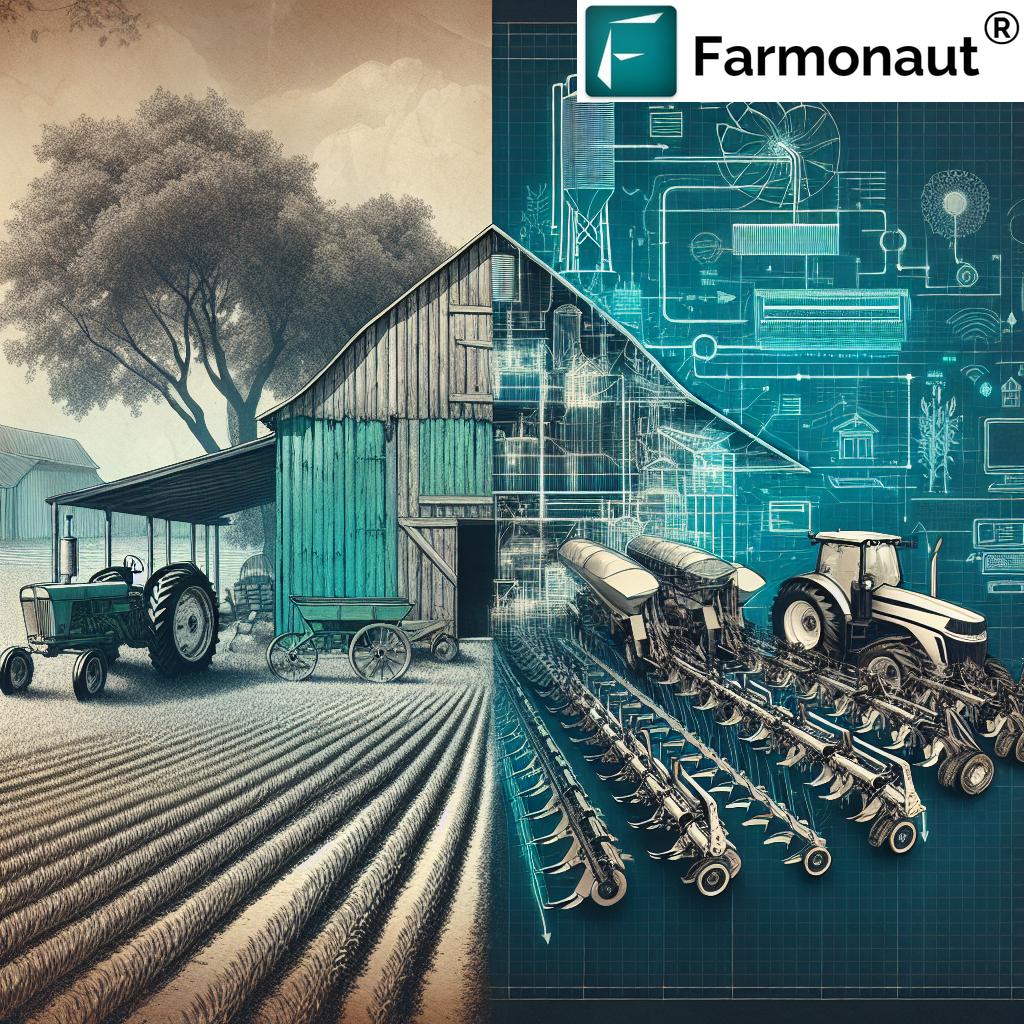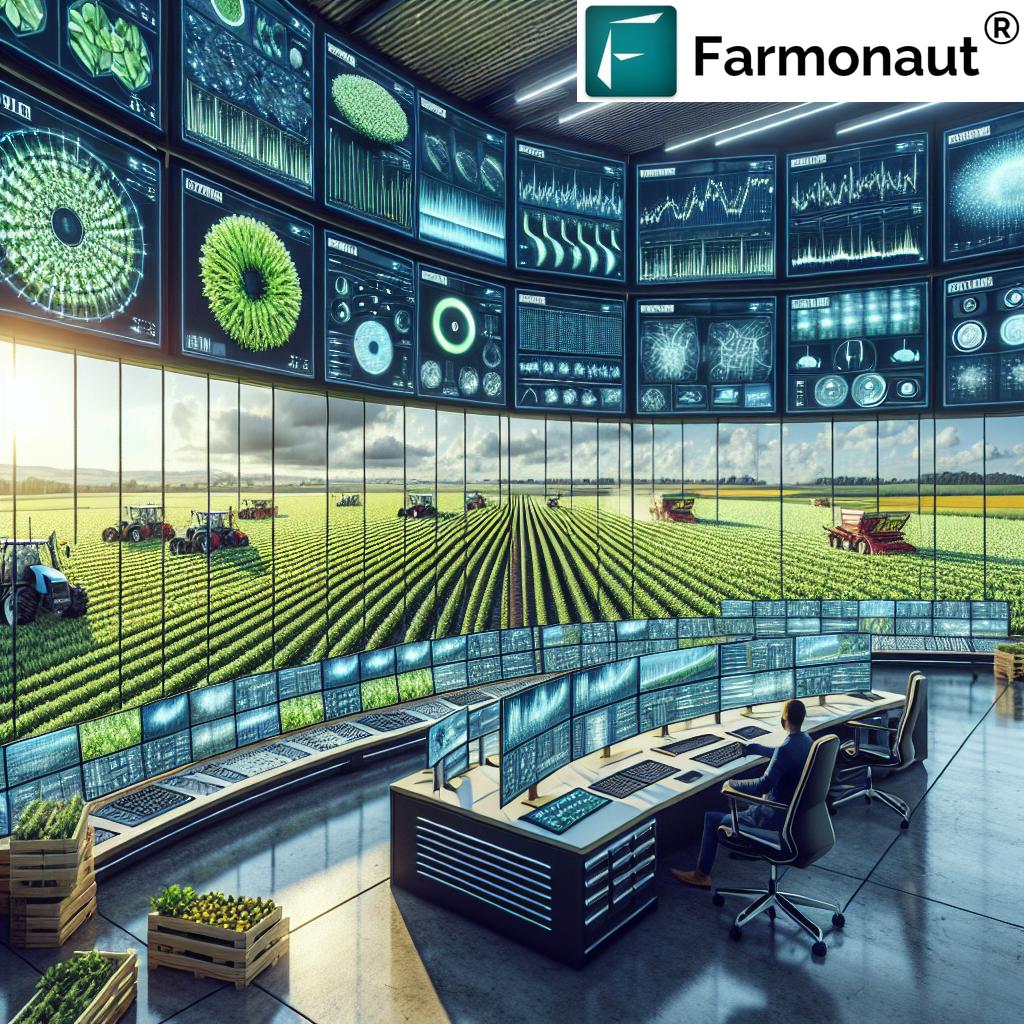Precision Farming Market Booms: 2024 Tech Trends Revealed
Table of Contents
- Introduction: Why Precision Farming Is Booming in 2024
- Precision Farming Market Overview & Growth Projections
- Key Technologies Shaping Precision Agriculture in 2024
- Precision Farming Technology Adoption & Impact Table
- Market Drivers Fueling the Surge in Precision Farming
- Challenges and Restraints: What Might Hinder Market Growth?
- Regional Insights: Precision Farming Across the Globe
- Recent Developments & Innovations in the Precision Farming Market
- How Farmonaut Makes Affordable, Satellite-Driven Precision Farming Possible
- Farmonaut Subscription Plans
- Precision Farming FAQ – Your Questions Answered
- Conclusion: Precision Agriculture as the Backbone of Future Farming
Introduction: Why Precision Farming Is Booming in 2024
Precision farming, also known as precision agriculture, stands at the heart of the technological transformation sweeping across the world’s agricultural market in 2024. By embracing advanced farming technologies such as IoT devices, AI-based analytics, GPS systems, drones, and real-time data sensors, we as a global community are able to reimagine how our food is grown, harvested, and managed. The focus? Maximizing productivity and sustainability, while optimizing resource efficiency at every stage – from seeding to harvest.
With the world’s population approaching 10 billion, and climate change putting new pressure on agricultural systems, the adoption of precision crop management is not just a convenience; it’s a necessity. The rapid growth of this market is a direct result of farmers adopting smart farming systems and governments supporting sustainable farming solutions to meet ever-increasing food demands and stringent environmental standards.
What Sets Precision Farming Apart?
- Relies on site-specific data – every field and crop receives customized attention.
- Integrates IoT, drones, AI, and satellite imagery for data-driven decision-making.
- Reduces waste, optimizes input use (water, fertilizers, pesticides), and boosts yields by targeting resources precisely.
- Promotes sustainable agricultural practices in line with global environmental goals.
Precision Farming Market Overview & Growth Projections
The precision agriculture market has experienced sustained growth over the last decade — a trend showing no sign of slowing down. According to recent market research, the global market value reached approximately USD 12.52 billion in 2024. But that’s only the beginning. Projections point toward an impressive USD 43.64 billion by 2034, driven by a robust compound annual growth rate (CAGR) of 13.3% (Source: Precedence Research).
What’s fueling this surge? It’s the adoption of advanced precision farming technologies, rising global food requirements, and the necessity to introduce sustainable agricultural practices robust enough to meet climate challenges while still increasing yields.
- High-tech Tools Penetrate Rural Farmlands: IoT in agriculture is now the norm, not the exception, empowering farmers in both developed and developing regions with real-time insights and integrated control.
- Strong Government Support: Incentives, subsidies, and technology programs worldwide are helping cut adoption costs for farmers, moving advanced systems into more hands, faster.
- Sustainability Mandates: As government regulations tighten around resource usage, environmental conservation, and waste reduction, precision crop management stands at the frontline of compliance.
Key Technologies Shaping Precision Agriculture in 2024
The backbone of the precision farming boom is a convergence of several technologies—each enhancing management practices, reducing costs, and increasing yield. Let’s explore the most impactful ones:
1. GPS and GIS: Mapping & Navigation Powerhouses
- Global Positioning System (GPS) and Geographic Information System (GIS) are now indispensable for mapping fields, guiding machinery (including autonomous tractors), and planning precise planting patterns.
- GIS overlays data like soil type and moisture with yield records, ensuring that each patch of land is treated optimally for its specific conditions.
- With GPS-guided autonomous tractors (see John Deere‘s latest innovations), input overlap is minimized, reducing fertilizer and pesticide waste and lowering overall operational costs.
2. IoT Sensors: The Pulse of Modern Farm Management
- Sensors embedded throughout fields capture continuous data on soil moisture, temperature, nutrient levels, and weather.
- IoT devices allow for granular irrigation scheduling, early disease detection, and personalized advisory for every field.
- As seen on Omdena, these insights dramatically boost resource efficiency and yield.
3. Drones & Aerial Imaging: Seeing What’s Invisible
- Drones for crop monitoring are equipped with multispectral and thermal cameras, providing aerial imaging that captures in-field stress, pest outbreaks, or irrigation issues swiftly.
- Such targeted monitoring enables early interventions—cutting the need for widespread pesticide or fertilizer application.
- Operations become more cost-efficient and environmentally sustainable as unnecessary treatments are minimized.
4. Variable Rate Technology (VRT): Precision at Its Core
- Variable Rate Technology in agriculture adjusts input levels—from seeds to fertilizers—according to micro-zones identified through data analysis.
- No blanket spraying; input application matches soil and crop needs for each field segment.
- VRT delivers cost savings, yield increases, and environmental gains, making it a win-win.
5. AI & Machine Learning: The Brainpower of Precision Farming
- AI in precision farming turns extensive sensor and satellite data into actionable insights—predicting yields, detecting disease outbreaks, and optimizing planting windows.
- ML algorithms continually improve by analyzing outcomes, helping us master crop and field management like never before.
- New AI tools can even flag emerging crop pests and recommend immediate interventions.
6. Satellite Imaging: Monitoring Scale & Detail Simultaneously
- Satellites scan thousands of acres daily, delivering NDVI-based crop health monitoring, soil moisture analytics, and aerial change detection at regional, national, and individual-field scale.
-
Farmonaut pioneers the use of satellite analytics via web and mobile apps:
– Access affordable, real-time crop health reports.
– Gain AI-based advisories to improve planting, irrigation, and pest management.
– Democratize advanced precision farming solutions regardless of farm size or geography!
7. Blockchain: Unmatched Traceability for Agriculturists & Consumers
- Blockchain brings traceability and trust, enabling secure, transparent tracking from farm to table. Consumers can verify product origin, quality, and ethical standards.
- Farmonaut Traceability Solutions bring this feature to agribusinesses, food processors, and export markets, building consumer trust and complying with global standards.
Precision Farming Technology Adoption & Impact Table
| Technology | Estimated 2024 Global Adoption Rate (%) |
Main Feature/Application | Estimated Crop Yield Increase (%) | Key Sustainability Benefit |
|---|---|---|---|---|
| IoT Sensors & Devices | 58% | Soil & weather monitoring, irrigation automation | 12–18% | Reduces water/fertilizer waste, optimizes input use |
| AI-Powered Analytics | 45% | Yield prediction, disease detection, advisory | 15–22% | Enhances decision efficiency, reduces crop loss |
| Drones for Crop Monitoring | 28% | Aerial imaging, pest identification, mapping | 10–16% | Minimizes pesticide overuse, targets interventions |
| Satellite Imaging | 34% | Large area crop health & soil monitoring | 11–19% | Scalable resource use, remote/rural coverage |
| Variable Rate Technology (VRT) | 21% | Precise input application (seeds, fertilizers, water) | 13–17% | Input savings, environmental impact reduction |
| Blockchain Traceability | 7% | Supply chain transparency, fraud prevention | N/A | Guarantees product authenticity & reduces fraud |
Market Drivers Fueling the Surge in Precision Farming
Why is the adoption of precision farming technologies unprecedented? Multiple market drivers set the stage for this dramatic growth:
1. Rising Global Food Demand
- Feeding nearly 10 billion people by 2050 demands precision and efficiency that traditional methods alone cannot deliver.
- Precision agriculture allows us to maximize yields on every hectare and combat food insecurity without unsustainable land expansion.
2. Environmental Sustainability & Resource Scarcity
- Governments and consumers now prioritize sustainable farming solutions that eliminate waste, minimize runoff, and improve soil health.
- Smart irrigation, precision fertilization, and pesticide management not only protect our planet, but also make farming more profitable.
- Farmonaut Carbon Footprinting Tools help agribusinesses monitor and reduce emissions, supporting compliance and sustainability goals.
3. Government Support and Subsidies
- Numerous government programs and subsidies reduce the burden on farmers investing in new technologies.
- In Europe, for instance, CAP and the European Green Deal actively incentivize the adoption of advanced agricultural practices for sustainability.
- Many countries also provide digital infrastructure investments to improve rural connectivity, making precision farming accessible in remote areas.
4. Advances in Data Analytics & Automation
- The power of “big data in agriculture” means every weather event, sensor reading, and satellite scan can be used to optimize farm management.
- Seamless integration of AI/ML enables farmers to receive real-time guidance and long-term strategic insights, multiplying their productivity and profitability.
Challenges and Restraints: What Might Hinder Market Growth?
While the future is bright, several obstacles remain for the widespread adoption of precision farming technologies:
- High Initial Costs: Investment in sensors, drones, AI, and machinery can be significant, especially for smallholder farmers. Affordable, scalable software-based solutions (like Farmonaut’s app and API) are making new inroads here.
- Limited Internet Connectivity: Many rural areas still face slow or unreliable network infrastructure, restricting real-time data flow and automation potential.
- Skills & Training Gap: Mastering advanced technologies and interpreting complex datasets requires tailored support for all users—from machinery operators to farm managers.
- Data Security Concerns: As AI-driven, data-centric systems proliferate, keeping supply chain and farm data secure is an ongoing priority.
Regional Insights: Precision Farming Adoption Around the Globe
The growth of the precision agriculture market is not uniform; each geography boasts unique drivers and challenges:
North America: Leading the Charge in Precision
- North America captures nearly 43% of market revenue and is home to a strong culture of innovation and large-scale farm management.
- Extensive government support and digital/rural infrastructure bolster adoption of IoT, drones, and AI systems.
Europe: Green Policy, Big Gains
- EU sustainability policies (CAP, Green Deal) and resource directives are driving demand for precision farming across Western and Central European agriculture.
- Precision crop management is a pillar of “farm-to-fork” ambitions and climate-neutral food production in the European region.
Asia Pacific: Fastest-Growing Region
- Asia Pacific is experiencing a surge in digital farming, with a projected CAGR above 15.5% from 2025 to 2030.
- Government-driven tech schemes in India, Sri Lanka, and the region’s emerging economies bring precision agriculture to small and large farms alike.
- Solutions like Farmonaut Large-Scale Farm Management enable organized, scalable plantation monitoring and resource optimization.
Global Expansion into Rural & Remote Areas
- Satellite imaging and IoT in agriculture make it possible for even rural areas with basic infrastructure to benefit from data-driven precision farming systems.
- Farmonaut Crop Plantation & Forest Advisory empowers users everywhere to optimize planting, detect disease, and guide field operations, even in hard-to-reach communities: Try the advisory features.
Recent Developments & Innovations in the Precision Farming Market
2024 is a highlight year for precision farming breakthroughs. Two notable advances include:
John Deere’s Autonomous Tractor
- In March 2024, John Deere introduced a fully-autonomous, GPS-guided tractor with AI sensors for precision planting and harvesting. This reduces error and labor dependency while maximizing input efficiency.
- The system uses in-field sensors to avoid obstacles, synchronizes planting depth in real time, and leverages IoT to adapt to changing soil conditions.
Trimble’s AI-Powered Crop Monitoring Suite
- In February 2024, Trimble rolled out an AI-driven crop monitoring solution, delivering real-time yield prediction, soil health analysis, and disease alerting through an intuitive platform.
- These advances underscore a new era—one where machine learning in agriculture is woven directly into decision-making and resource allocation.
How Farmonaut Makes Affordable, Satellite-Driven Precision Farming Possible
At the cutting edge of this revolution is Farmonaut, a leader in making precision agriculture technology affordable, scalable, and accessible globally. Here’s how we deliver true value—across farms, businesses, and policy-makers:
- Satellite-based crop health monitoring: High-resolution, multispectral satellite imagery delivers insights into NDVI, soil moisture, and crop health—empowering farmers to act proactively for disease control and optimal irrigation.
- AI-powered Jeevn advisory: Our proprietary AI system brings weather data, advisory, and personalized crop management strategies direct to farmer’s phones. Adopt advanced solutions without the cost or complexity of field hardware!
-
Blockchain-based traceability: Ensure food and product trustworthiness with end-to-end batch-level traceability—an essential for sourcing and quality-minded markets.
Discover Farmonaut Traceability -
Fleet and resource management tools: Agribusinesses and cooperatives can centrally manage machinery, vehicles, and staff, cut operational costs, and optimize field operations across wide geographies.
Explore Fleet Management Solutions -
Carbon footprinting: Monitor and reduce emissions with real-time, field-level carbon tracking aligned to sustainability and compliance mandates.
Farmonaut’s Carbon Footprint Tracking - API-first, mobile-friendly approach: Leverage our API or integrate with your own digital ecosystem – all supported by comprehensive developer documentation.
- Flexible subscription model: We support individual farmers, agribusinesses, cooperatives, and government agencies—all through friendly subscription plans tailored by hectare, feature, or access frequency.
-
Crop loan & insurance validation: By providing third-party, satellite-based verification, Farmonaut helps financial institutions reduce fraud, speed up disbursement, and expand credit reach.
See Crop Loan & Insurance Features
Accessible on Every Device, Everywhere
- Android & iOS Apps: Farmonaut for Android & Farmonaut iOS bring professional satellite-based crop monitoring into your pocket.
- Web & Browser App: No installs. Just log in through your browser for a comprehensive dashboard for farm, fleet, and resource management. Start monitoring your fields now!
Serving: Individual Farmers, Agribusinesses, Governments, and Corporates
- Farmers: Real-time notifications for disease detection, irrigation alerts, and pest monitoring, reducing crop loss and improving precision yield.
- Agribusinesses: Streamline plantation management, resource allocation, carbon tracking, and supply chain transparency.
- Governments & NGOs: Monitor crop areas, estimate yield, allocate subsidies, and support large-scale sustainable initiatives using real-time, site-specific data analytics.
- Corporate Clients: Use blockchain-powered tools to ensure traceable, ethical, and quality-certified sourcing that builds consumer trust, especially in textile and food sectors.
Farmonaut Subscription Plans
Embrace the future of precision agriculture with Farmonaut’s flexible, affordable, subscription-based solutions—serving everyone from local farmers to multinational enterprises and government agencies. Monitor from one hectare to thousands; benefit from NDVI, moisture, weather, traceability, carbon tracking, and more.
API user? Find all API connection details and full developer docs here:
→ Farmonaut API | API Developer Docs
Precision Farming FAQ – Your Questions Answered
What is precision farming, in simple terms?
Precision farming refers to using advanced technologies like satellites, IoT, AI, sensors, and data analytics to manage farms more accurately and efficiently. It helps farmers deliver exactly what each plant or field segment needs—boosting yields, saving resources, and increasing profits.
How does IoT in agriculture really work?
IoT (Internet of Things) devices—such as soil sensors and weather stations—collect data from fields around the clock. This information is sent to a central system or app (like Farmonaut), which then informs the farmer about irrigation needs, pest outbreaks, plant health problems, and even when to harvest.
Are these technologies only for large farms or corporates?
No. New satellite- and app-based solutions, such as those from Farmonaut, make advanced agricultural practices affordable and accessible to smallholder farmers worldwide. All you need is a smartphone or access to the web app!
How do drones improve crop productivity?
Drones fly over fields, taking high-resolution aerial images and thermal scans. These reveal irrigation issues, diseases, pest outbreaks, and nutrient deficiencies—allowing for rapid, targeted interventions and reducing the need for broad pesticide or fertilizer use.
What are the main benefits of using AI in precision farming?
AI in precision agriculture processes massive data quickly, giving farmers precise yield predictions, early disease warnings, and the best planning dates for planting or fertilization. This boosts decision accuracy and cuts unnecessary input costs.
Where can I get started with affordable, satellite-driven farm monitoring?
Simply download Farmonaut’s Android or iOS app or log in through your browser for instant access to NDVI, moisture, weather, and AI advisories:
Try Farmonaut now!
Does precision farming really support sustainability?
Absolutely! By delivering inputs exactly where needed, precision farming drastically reduces waste, runoff, and soil degradation—helping meet global environmental targets.
How can financial institutions use Farmonaut?
Through Farmonaut’s crop loan & insurance platform, banks and insurers can verify crop condition and farm area via satellite, reducing fraud and streamlining loan approvals.
Conclusion: Precision Agriculture as the Backbone of Future Farming
The 2024 revolution in precision farming brings together IoT, drones, AI, GPS, and satellites into a seamless system for advanced agricultural management. As our collective food and sustainability challenges grow, so does the urgency for precision, efficiency, and technology-led farming solutions.
With leaders like Farmonaut making state-of-the-art crop monitoring and advisory services affordable and user-friendly, the barriers of cost, complexity, and geography are rapidly collapsing. This means more farmers across Asia, Europe, North America, Pacific regions—and in every remote rural area—can now harness the transformative power of precision agriculture.
- We boost yields while reducing environmental harm.
- We cut farm costs with smarter sensors, VRT, and AI-driven advice.
- We ensure transparency and sustainability from field to fork.
- We empower smallholders, agribusinesses, and governments all at once.
This rapid growth is just the beginning. As innovations continue and government support expands, the future of farming will be built on precision, sustainability, and shared data-driven success.
Your journey to smarter, sustainable farming begins today—let’s cultivate the future, together.





